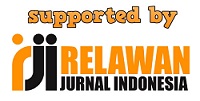Students’ Scientific Problem Solving Skills in 3T Region: Using PhET Simulation to Enhance the Matter
DOI:
https://doi.org/10.25273/jpfk.v7i2.10783Keywords:
3T Region, PhET Simulation, Physics, Scientific Problem Solving Skills, Vibration and Wave.Abstract
Contextual problems in daily life are related closely with scientific problem solving skills. It is necessary to prepared when students study science comprehensively. The aim of this study was analyzing students’ scientific problem solving skills during the learning process bysimulation of PhET located in 3T region. The outermost area in the territory of Indonesia is referred as 3T region. There are three conditional aspects of 3T region; terdepan (frontier), terpencil (remote), and tertinggal (disadvantaged). A number of 122 regions in Indonesia are included in the 3T region, one of which is Nimboran, Papua. SMAN 1 Nimboran, Papua Indonesia, was chosen as research subject. We comprehended the analysis by using descriptive qualitative method. Participants were 51 students chosen from purposive random sampling technique above all students in XI-IPA grade of SMAN 1 Nimboran. Data collecting
was done through triangulation using interview, observation, and documentation (test). The research was conducted during the second term. The obtained results were as follows: students can define the problem (10.20%), students can explore the problem (3.27%), students can plan the solution (10.98%), students can implement the plan (6.54%), students can check the solution (1.70%), and students can evaluate the data (4.44%). The mean result was 38.46. It was interpreted that showed students’ scientific problem solving skills in SMAN 1 Nimboran was low. Thus, the need to improve the skills is demanded.
Downloads
References
Abou Faour, M., & Ayoubi, Z. (2017). The effect of using virtual laboratory on grade 10 students’ conceptual understanding and their attitudes towards physics. Journal Of Education In Science Environment And HEALTH, 4(1), 54–68.
Adams, W. K. (2010). Student engagement and learning with PhET interactive simulations. Il Nuovo Cimento C, 33(3), 21–32.
Adams, W. K., & Wieman, C. E. (2015). Analyzing the many skills involved in solving complex physics problems. American Journal of Physics, 83(5), 459–467.
Alpaslan, M. M., Yalvac, B., Loving, C. C., & Willson, V. (2016). Exploring the Relationship Between High School Students’ Physics-Related Personal Epistemologies and Self-regulated Learning in Turkey. International Journal of Science and Mathematics Education, 14(2), 297–317. https://doi.org/10.1007/s10763-015-9685-7
Amin, M., Muslim, S., & Wirasti, M. K. (2020). Modul Pembelajaran Hypercontent Pengenalan Perangkat Jaringan Komputer Untuk Mahasiswa Asal Daerah 3T Di Stkip Surya. Jurnal Nasional Pendidikan Teknik Informatika: JANAPATI, 9(2), 228–242.
Argaw, A. S., Haile, B. B., Ayalew, B. T., & Kuma, S. G. (2016). The effect of problem based learning (PBL) instruction on students’ motivation and problem solving skills of physics. Eurasia Journal of Mathematics, Science and Technology Education, 13(3), 857–871.
Asadollahi Kheirabadi, M., & Mirzaei, Z. (2019). Descriptive valuation pattern in education and training system: a mixed study. Journal of Humanities Insights, 3(01), 7–12.
Bagarukayo, E., Weide, T., Mbarika, V., & Kim, M. (2012). The impact of learning driven constructs on the perceived higher order cognitive skills improvement: Multimedia vs. text. International Journal of Education and Development Using ICT, 8(2).
Batuyong, C. T., & Antonio, V. V. (2018). Exploring the effect of PhET interactive simulation-based activities on students’ performance and learning experiences in electromagnetism. Asia Pacific Journal of Multidisciplinary Research, 6(2), 121–131.
Briggs, L. J. (1967). Instructional Media: A Procedure for the Design of Multi-Media Instruction, A Critical Review of Research, and Suggestions for Future Research.
Budiarti, I. S., Suparmi, A., Sarwanto, & Harjana. (2018). Heat transfer concept on Bakar Batu Papua’s culture. AIP Conference Proceedings, 2014(1), 20133.
Budiarti, I. S., & Tanta, T. (2021). Analysis On Students’ Scientific Literacy of Newton’s Law and Motion System in Living Things. Jurnal Pendidikan Sains Indonesia (Indonesian Journal of Science Education), 9(1), 36–51.
Correia, A.-P., Koehler, N., Thompson, A., & Phye, G. (2019). The application of PhET simulation to teach gas behavior on the submicroscopic level: Secondary school students’ perceptions. Research in Science & Technological Education, 37(2), 193–217.
Darmawan, A., Asa, B. N., Kurniawan, F., & Nukhba, R. (2020). Pengembangan Instrumen Tes Pemecahan Masalah Bagi Mahasiswa Jurusan Fisika Pada Materi Dinamika Partikel. 6(1), 55–64.
Diani, R., & Syarlisjiswan, M. R. (2018). Web-enhanced course based on problem-based learning (PBL): Development of interactive learning media for basic physics II. Jurnal Ilmiah Pendidikan Fisika Al-Biruni, 7(1), 105.
Dike, D. (2017). Pendidikan multikultural sekolah dasar di wilayah 3T. Jurnal Pendidikan Dasar Perkhasa: Jurnal Penelitian Pendidikan Dasar, 3(1), 277–287.
Dįnçer, S. (2018). Content analysis in for educational science research: Meta-analysis, meta-synthesis, and descriptive content analysis. Bartin Üniversitesi Egitim Fakültesi Dergisi, 7(1), 176–190.
Fernandez-Rio, J., Sanz, N., Fernandez-Cando, J., & Santos, L. (2017). Impact of a sustained Cooperative Learning intervention on student motivation. Physical Education and Sport Pedagogy, 22(1), 89–105. https://doi.org/10.1080/17408989.2015.1123238
Forum, W. E. (2015). New vision for education: Unlocking the potential of technology. British Columbia Teachers’ Federation Vancouver, BC.
Gao, C., Zuzul, T., Jones, G., & Khanna, T. (2017). Overcoming Institutional Voids: A Reputation-Based View of Long-Run Survival. Strategic Management Journal, 38(11), 2147–2167. https://doi.org/10.1002/smj.2649
Halliday, D., Resnick, R., & Walker, J. (2013). Fundamentals of physics. John Wiley & Sons.
Ince, E. (2018). An Overview of Problem Solving Studies in Physics Education. Journal of Education and Learning, 7(4), 191–200.
Kholiq, A. (2020). Development of B D F-AR 2 (Physics Digital Book Based Augmented Reality) to train students’ scientific literacy on Global Warming Material. Berkala Ilmiah Pendidikan Fisika, 8(1), 50. https://doi.org/10.20527/bipf.v8i1.7881
Kurniawan, W., Jufrida, J., Basuki, F. R., Ariani, R., & Fitaloka, O. (2019). Virtual Laboratory Based Guided Inquiry: Viscosity Exsperiments. JIPF (Jurnal Ilmu Pendidikan Fisika), 4(2), 91. https://doi.org/10.26737/jipf.v4i2.1069
Loeb, S., Dynarski, S., McFarland, D., Morris, P., Reardon, S., & Reber, S. (2017). Descriptive Analysis in Education: A Guide for Researchers. NCEE 2017-4023. National Center for Education Evaluation and Regional Assistance.
MASKHULIAH, P., & BUNGKANG, Y. (2017). Pengembangan Modul Pembelajaran IPA Berbasis Pendekatan Keterampilan Proses Sains Pada Materi Listrik Dinamis Untuk Siswa Kelas IX Mts Al Muttaqin Buper Jayapura. Jurnal Ilmu Pendidikan Indonesia, 5(1), 55–66.
Milner-Bolotin, M., Fisher, H., & MacDonald, A. (2013). Modeling active engagement pedagogy through classroom response systems in a physics teacher education course. LUMAT: International Journal on Math, Science and Technology Education, 1(5), 523–542.
Moleong, L. J. (2019). Metodologi penelitian kualitatif.
Moore, E. B., Chamberlain, J. M., Parson, R., & Perkins, K. K. (2014). PhET interactive simulations: Transformative tools for teaching chemistry. Journal of Chemical Education, 91(8), 1191–1197.
Mourtos, N. J., Okamoto, N. D., & Rhee, J. (2004). Defining, teaching, and assessing problem solving skills. 7th UICEE Annual Conference on Engineering Education, 1–5.
Naimah, J., Winarni, D. S., & Widiyawati, Y. (2019). Pengembangan Game Edukasi Science Adventure Untuk Meningkatkan Keterampilanpemecahan Masalah Siswa. Jurnal Pendidikan Sains Indonesia (Indonesian Journal of Science Education), 7(2), 91–100. https://doi.org/10.24815/jpsi.v7i2.14462
Nanditasari, T. (2019). Game Mophy ( Monopoly Physics ) Sebagai Alternatif Media Pembelajaran Fisika untuk Meningkatkan Penguasan Konsep Siswa. 5(2), 101–108.
Ndihokubwayo, K., Uwamahoro, J., & Ndayambaje, I. (2020). Effectiveness of PhET Simulations and YouTube Videos to Improve the Learning of Optics in Rwandan Secondary Schools. African Journal of Research in Mathematics, Science and Technology Education, 24(2), 253–265.
Nomor, P. (22 C.E.). Tahun 2016, Standar proses untuk. Satuan Pendidikan Dasar Dan Menengah, Jakarta, Kemdikbud.
Novia, N., & Riandi, R. (2017). The analysis of students scientific reasoning ability in solving the modified Lawson Classroom Test of scientific reasoning (MLCTSR) problems by applying the levels of inquiry. Jurnal Pendidikan IPA Indonesia, 6(1).
Nurhidayati, N., Fauzia, S., & Maknun, A. L. U. (2019). Arouse the Creativity of a Generation of Millenial Doctrines with the Media Learning Physics and Innovative Eco-Friendly. Proceeding International Conference on Science and Engineering, 2, 331–335.
Patton, M. Q. (2014). Qualitative Research & Evaluation Methods: Integrating Theory and Practice.
Price, A. M., Perkins, K. K., Holmes, N. G., & Wieman, C. E. (2018). How and why do high school teachers use PhET interactive simulations? Learning, 33, 37.
Price, A., Wieman, C., & Perkins, K. (2019). Teaching with simulations. The Science Teacher, 86(7), 46–52.
Putra, M. T. F., Arianti, A., & Elbadiansyah, E. (2019). ANALISIS PENERAPAN MODEL DAN METODE PEMBELAJARAN TEPAT GUNA PADA DAERAH 3T (TERDEPAN, TERPENCIL DAN TERTINGGAL) DI KABUPATEN MAHAKAM ULU. Sebatik, 23(2), 317–323.
Putranta, H., & Wilujeng, I. (2019). Physics learning by PhET simulation-assisted using problem based learning (PBL) model to improve students’ critical thinking skills in work and energy chapters in MAN 3 Sleman. Asia-Pacific Forum on Science Learning & Teaching, 20(1).
Reddy, M., & Panacharoensawad, B. (2017). Students Problem-Solving Difficulties and Implications in Physics: An Empirical Study on Influencing Factors. Journal of Education and Practice, 8(14), 59–62.
Rideout, V. (2014). Learning at home: Families’ educational media use in America. Joan Ganz Cooney Center at Sesame Workshop.
Rohani, R. (2019). Media pembelajaran.
Ryan, Q. X., Frodermann, E., Heller, K., Hsu, L., & Mason, A. (2016). Computer problem-solving coaches for introductory physics: Design and usability studies. Physical Review Physics Education Research, 12(1), 10105.
Samal, A. L. (2018). Implementasi Pendidikan Karakter di Sekolah dan Perguruan Tinggi Melalui Pembelajaran Aktif. Jurnal Ilmiah Iqra’, 11(1).
Sanoto, H., Soesanto, S., Soegito, A. T., & Kardoyo, K. (2021). Pengaruh Supervisi Akademik Terhadap Peningkatan Kompetensi Guru di Daerah 3T (Terdepan, Terpencil, Tertinggal). Scholaria: Jurnal Pendidikan Dan Kebudayaan, 11(2), 166–172.
Saputra, H., Al Auwal, T. M. R., & Mustika, D. (2017). Pembelajaran Inkuiri Berbasis Virtual Laboratory Untuk Meningkatkan Kemampuan Literasi Sains Mahasiswa Calon Guru Pendidikan Fisika Universitas Samudra. Jurnal IPA & Pembelajaran IPA, 1(2), 143–148. https://doi.org/10.24815/jipi.v1i2.9688
Serway, R. A., & Jewett, J. W. (1998). Principles of physics (Vol. 1). Saunders College Pub. Fort Worth, TX.
Syafii, A. (2018). Perluasan dan pemerataan akses kependidikan daerah 3T (terdepan, terluar, tertinggal). Dirasat: Jurnal Manajemen Dan Pendidikan Islam, 4(2), 153–171.
Trianggono, M. M. (2017). Analisis Kausalitas Pemahaman Konsep Dengan Kemampuan Berpikir Kreatif Siswa Pada Pemecahan Masalah Fisika.
Viyanti, V., Cari, C., Prasetyo, Z. K., & Maulina, H. (2020). Does the Cognitive Activity can Generate Student’s Physics Argumentation Performance Features? Jurnal Ilmiah Pendidikan Fisika Al-Biruni, 9(1), 177–183.
Wieman, C. E., Adams, W. K., Loeblein, P., & Perkins, K. K. (2010). Teaching physics using PhET simulations. The Physics Teacher, 48(4), 225–227.
Yulianti, R., Lumbantobing, H., & Triwiyono, T. (2016). PENERAPAN METODE THINKING ALOUD PAIR PROBLEM SOLVING (TAPPS) DAN HYPNOTEACHING PADA MATERI SISTEM PERSAMAAN LINIER DUA VARIABEL (SPLDV) DI KELAS VIII UNTUK MENINGKATKAN KEMAMPUAN REPRESENTASI DAN PENGUASAAN KONSEP MATEMATIKA PESERTA DIDIK SMP NEGERI 3 NIM. JURNAL ILMIAH MATEMATIKA DAN PEMBELAJARANNYA, 1(1).
Yuliati, L., Riantoni, C., & Mufti, N. (2018). Problem Solving Skills on Direct Current Electricity through Inquiry-Based Learning with PhET Simulations. International Journal of Instruction, 11(4), 123–138.
Yusuf, I., & Widyaningsih, S. W. (2019). HOTS profile of physics education students in STEM-based classes using PhET media. Journal of Physics: Conference Series, 1157(3), 32021.
Downloads
Published
Issue
Section
License

Jurnal Pendidikan Fisika dan Keilmuan (JPFK) by http://e-journal.unipma.ac.id/index.php/JPFK/index is licensed under a Creative Commons Attribution-ShareAlike 4.0 International License.



















